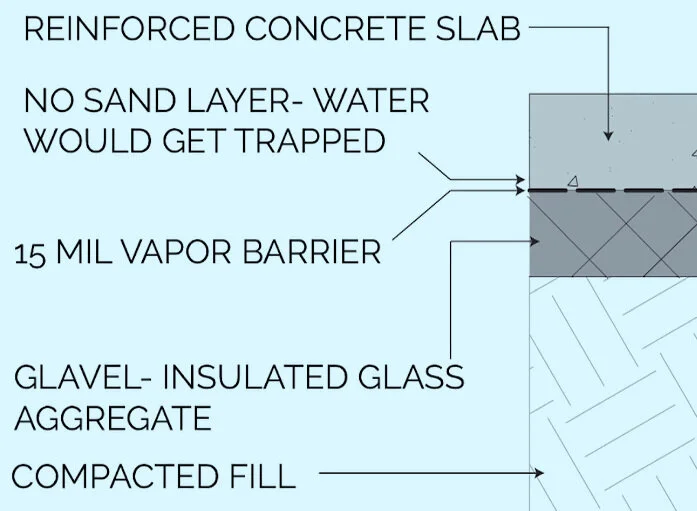(This is the sixth in our series of reflections on real construction decisions for one of our local projects: The Bishop Passive House)
Slab, schmab, right?
Not so much! For long-term durability of a building, thermal comfort of the occupants and successful adhesion and performance of the finished floor, some key choices on slab construction make all the difference.
In this short video at the Bishop Passive House, builder Mike Horgan walks us through the layers of the slab on grade. An essential component is to omit the layer of sand that is sometimes still used below the concrete and above the vapor barrier. Traditionally used to ‘drain’ wet concrete, the layer of blotter sand is now understood to actually trap moisture, which ends up seeping out of the concrete surface over months and even years.
The vapor barrier itself is also critical in that it should be thick enough to be durable and is applied continuously with tape and mastic to create a true air and moisture barrier. In addition, the mix design of the concrete should be considered for proper strengthening and workability as it is applied directly on the vapor barrier.



